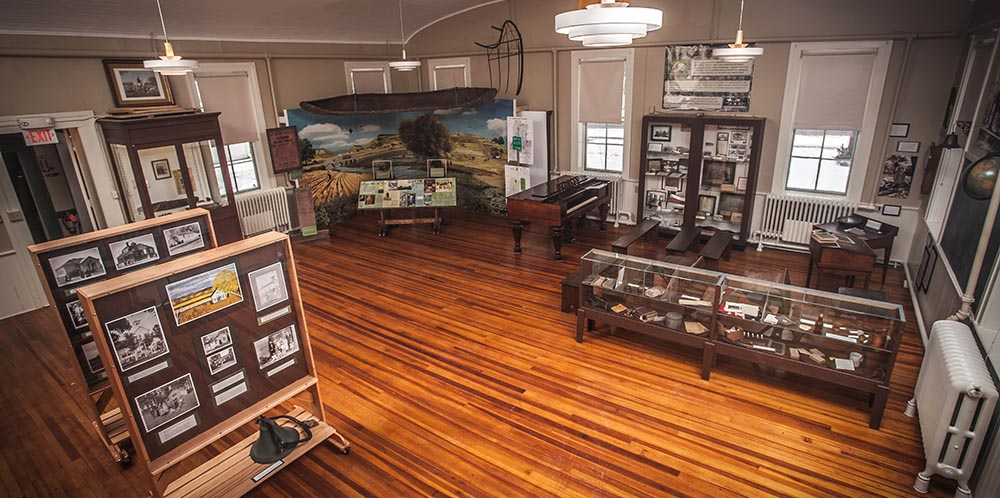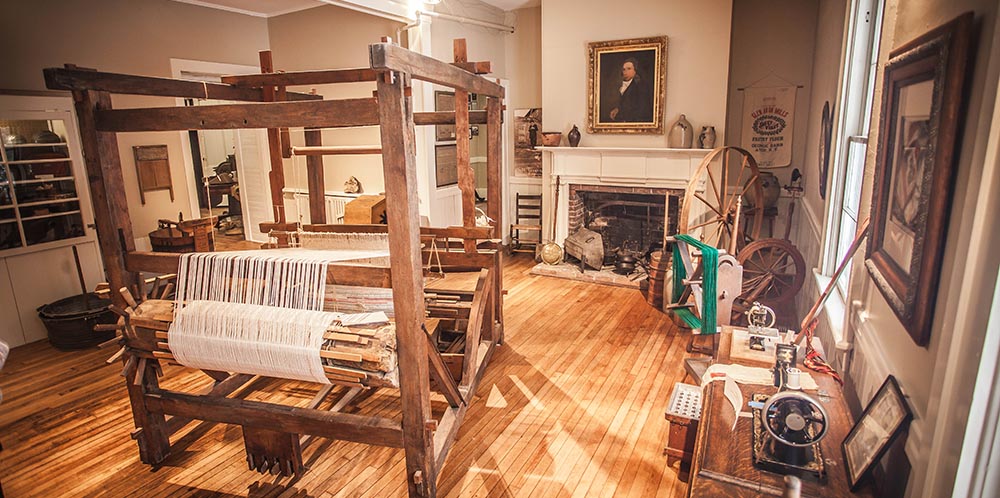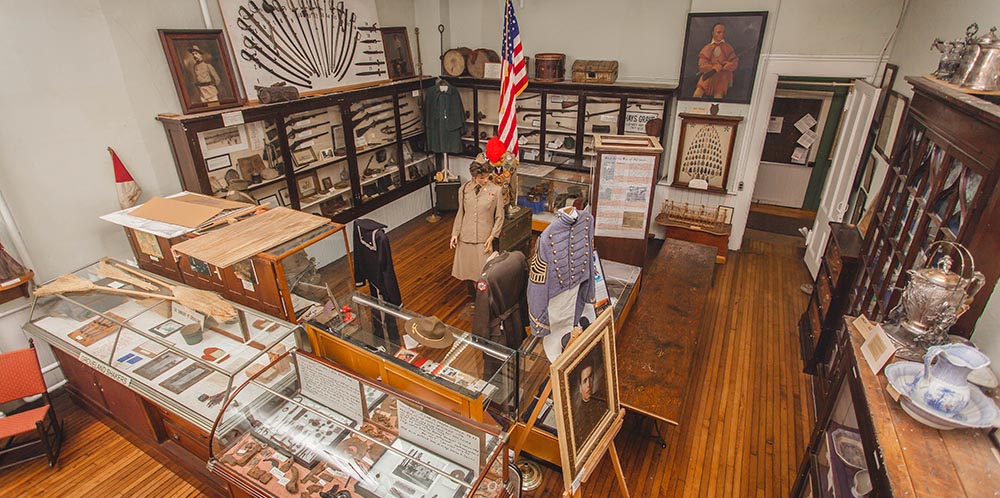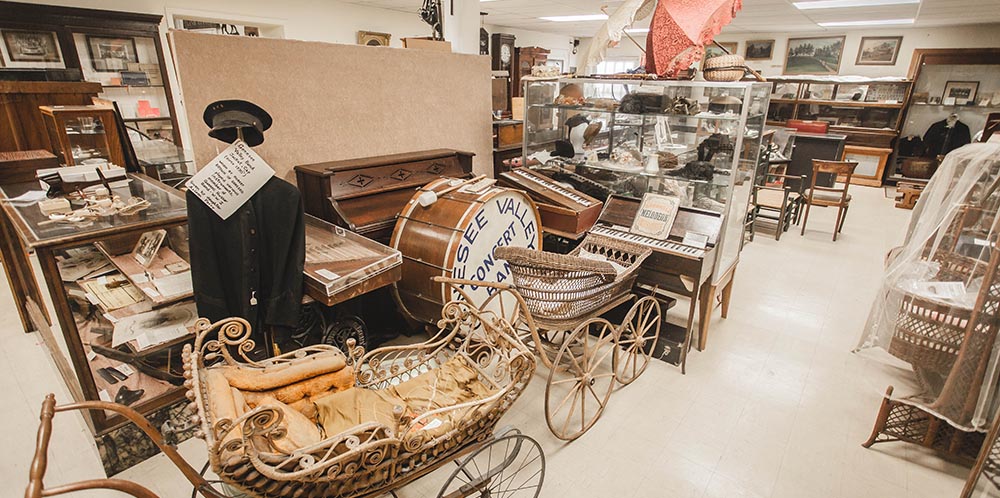Exhibits
Exhibits currently on display feature collections that document the personal, social, cultural, political, religious, military, medical, industrial, and agricultural history of the people of the 17 towns of Livingston County. The objects in the Livingston County Museum are used to create a sense of place for the Livingston County community and have great possibilities for public enlightenment and education. Our collections include clothing and household textiles, household objects, ceramics and china, paintings, kitchen utensils, toys and dolls, furniture, objects associated with local industries, objects associated with Native Americans, Groveland Shaker Colony objects, tools and farming implements, musical instruments, war memorabilia, early lighting, photography, typewriting and other technologies, and artifacts from local salt mines.
Always About the Land
"Always About the Land" tells a story of Livingston County from pre-European settlement to the present day. The innovative exhibit incorporates nine artifacts, a large artist-created background mural of the Livingston County countryside, and a narrative graphic rail connecting a visitor with a meaningful county identity and sense of place.
Whether you live in Livingston County today or had ancestors who did….or even if you are just passing through……this exhibit will ground you in the essentials of Livingston County history…past, present, and future.
Farm to Table in Livingston County
OPENING AUGUST 23RD, 2024
Groveland Shakers
“The Groveland Shakers 1826-1892” describes the community in Groveland who migrated from the shores of Lake Ontario onto 1670 acres of fertile land centrally located in Groveland, New York. This exhibit features a replica of an intact shaker stone found at the former shaker site which is now home to the Groveland Correctional Facility.
Home & Hearth
The Home and Hearth room displays mostly 19th century objects commonly used for cooking, cleaning, and sewing. A timber frame loom serves as a focal point among such utilitarian objects as spinning wheels, cast iron cookware, and pieces used for cleaning.
Salt Mining
Schoolhouse Days
The Genesee Valley is rich in salt deposits and mining in the region has been popular since 1878. This exhibit displays images, documents, and artifacts from the mining industries of Retsof Mine Company, Sterling Salt Mine, and the American Rock Salt Company as well as examples of different grades of rock salt.
This exhibit presents visual images and artifacts representing education in Livingston County primarily during the years 1820-1932 when this site itself was a schoolhouse, Geneseo District #5. A total of 171 district schools existed throughout the villages and country roads of Livingston County until increased population and consolidation closed one-room schoolhouses.
World War 1
The world experienced the end of World War 1 in 1918, a century ago. An upgrade to the WW1 exhibit examines this war from world, national, and local perspectives and features a digital collection of local photographs taken by Livingston County native, Paul Davis, during the War.
Our Towns: The History of Livingston County in 25 Objects
This exhibit will introduce you to a handful of the stories that contribute to the mosaic of life in Livingston County. Representatives from all seventeen towns in the county have contributed objects and stories to help tell us about the lives of people in our communities.




